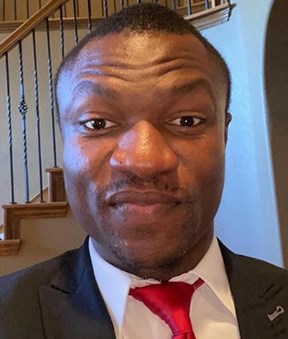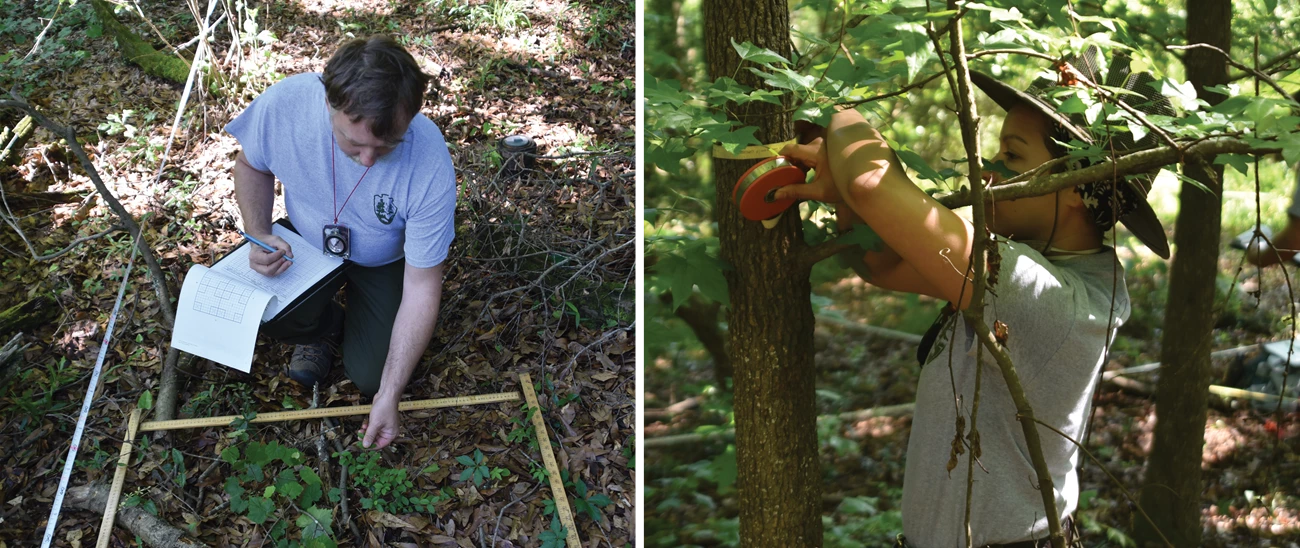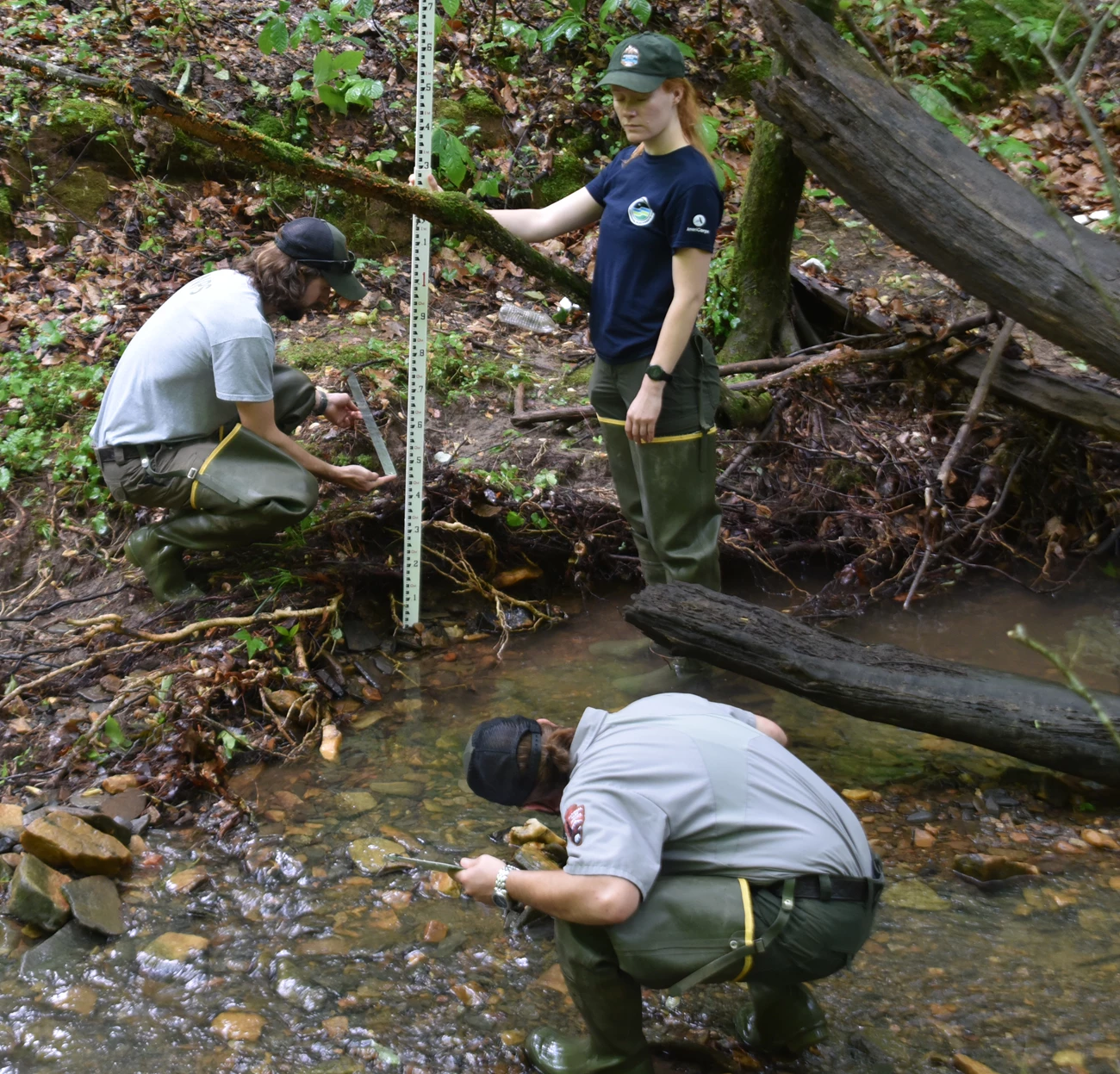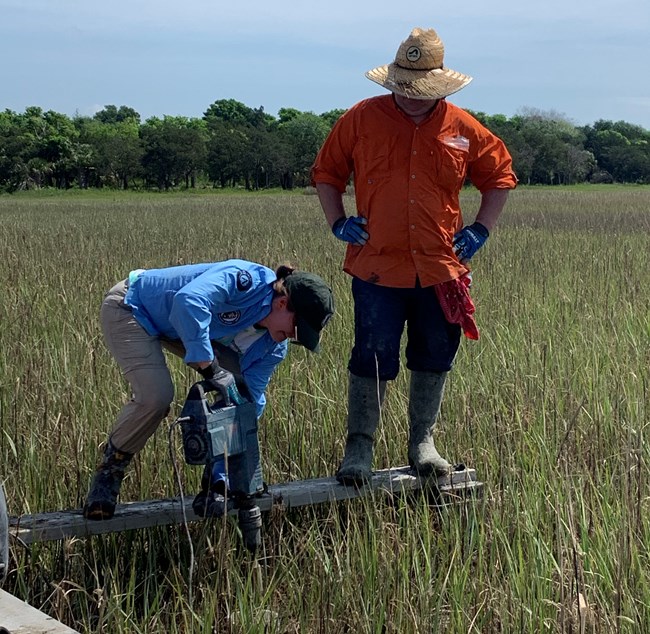Last updated: December 1, 2025
Article
SECN Highlights June 2021


Adetayo Okunoye Joins Network as Data Intern
The Southeast Coast Network welcomes a new data programming intern, Adetayo Okunoye. Adetayo is a PhD student at the University of Georgia majoring in Computer Science, and partnering with the network through the Piedmont South Atlantic Coast CESU program. He received an undergraduate degree in Computer Engineering from Ladoke Akintola University of Technology in Nigeria and a master’s degree in Computer Science from Southern University and A&M College (SUBR) in Baton Rouge, Louisiana. His main areas of collaboration will be assisting with construction and implementation of a new wadeable stream monitoring database, and completion of a wildlife monitoring database. In his spare time, Adetayo enjoys playing musical instruments and teaching others how to do the same. He also likes singing, travelling and playing chess, his favorite game. He replaces Ben Flanders, who earned his MS in Artificial Intelligence at the University of Georgia this spring. Welcome Adetayo and Best of Luck Ben!

Photos courtesy of Forbes Boyle
Assisting the Vegetation Monitoring Team
Julieanne Montaquila and Wiley Paxton recently joined the SECN vegetation field team to assist with monitoring in Congaree National Park and Chattahoochee River National Recreation Area. Julieanne is the new Scientist-in-the-Park Intern shared with the network and the Southeast and Caribbean Invasive Plant Management Team (SEC-IPMT), and Wiley comes in on detail from the Appalachian-Piedmont Fire Management Zone, where he works as a Fire Effects Lead, based out of Great Smoky Mountains National Park. Julieanne was raised in the northern suburbs of Chicago and always loved spending time in the outdoors with a curiosity for how things work in the natural world, esepcially plants. She graduated in May from Colgate University with a B.A. in Biology and wrote her senior honors thesis on earthworm community ecology. Julieanne also studied prairie plants at the University of Wisconsin at Madison in Dr. Ellen Damschen’s Lab as part of the National Science Foundation's Research Experiences for Undergraduates (NSF-REU) program. She is looking forward to gaining more field experience and learning how to identify some of the native plants of the southeast and understanding the type of work scientists do for the national parks. Personal interests include traveling, cooking, camping, and learning foreign languages. Wiley, a National Park Service employee for 20 years, has worked mostly in fire management and fire effects long-term monitoring. He also worked with rare plants, hemlock and exotic plants management and participated in an elk re-introduction project. Wiley loves studying plants, plant ecology and working with fire management. Beyond his work, he enjoys long distance running, gardening, skateboarding, surfing and spending time with his family. Welcome Julieanne and Wiley!

NPS photo / Mark Hynds

NPS photo / Mark Hynds
SECN Physical Scientist Publishes Paper
Stephen Cooper, SECN Physical Scientist, was recently published in the journal Quaternary Research (https://www.cambridge.org/core/journals/quaternary-research). The paper, A Lake Sediment–based Palaeoecological Reconstruction of Late Holocene Fire History and Vegetation Change in Great Basin National Park, Nevada, USA, investigated paleoenvironmental proxies such as pollen grains, macroscopic charcoal, and sediment geochemistry. These were taken from lacustrine sediments, to establish a 2,000-year record of fire history and vegetation change within the Stella Lake catchment at Great Basin National Park. He found that fire activity and vegetation community change was minimal during most of the first millennium AD but began to increase slightly during the latter 250 years of the first millennium, coinciding with the onset of the Medieval Climate Anomaly. The study also found evidence of two large-magnitude fire events that drastically changed the vegetative community around Stella Lake having occurred during the late 15th and 16th centuries AD, under the more variable climate conditions of the Little Ice Age. The paper was the result of Stephen's work on his Masters in Geography from the University of Georgia in 2019. Congratulations Stephen!

NPS photo
Goodbye Rachel
Rachel Layko finished her 20-week internship May 21, part of the NPS Geoscientists-in-the-Parks program. During her time with the network, she entered and validated surface elevation table (SET) data collected by Guana Tolomato Matanzas National Estuarine Research Reserve, a monitoring partner with the Southeast Coast Network. She also assisted with the installation of new SETs at Fort Pulaski National Monument and updated geospatial data for the Timucuan Ecological and Historic Preserve parcels and boundaries to support park resource management. While working with the network, she found time to earn her drone pilot license. Rachel said field work at Timucuan Ecological and Historic Preserve, especially working with archaeologists excavating the Kingsley House basement, was a highlight of her internship. Overall, she really appreciated the opportunity to learn how the network supports the parks and how the parks collaborate with partners and community members. This fall Rachel begins pursuing a PhD in Geography at Arizona State University in the Donovan Lab in the Center for Global Discovery and Conservation Science. Goodbye and good luck Rachel!
For More About the SECN: https://www.nps.gov/im/secn/index.htm
Tags
- piedmont south atlantic coast cesu program
- wadeable streams habitat monitoring
- wildlife monitoring
- congaree national park
- chattahoochee river national recreation area
- appalachian-piedmont fire management zone
- great smoky mountains national park
- surface elevation table
- landbird community monitoring
- anuran community monitoring
- coastal wetlands monitoring
- shoreline monitoring
- vegetation community monitoring
- fixed station water quality
- estuarine water quality
- canaveral national seashore
- cumberland island national seashore
- timucuan ecological and historic preserve
- fort matanzas national monument
- ocmulgee mounds national historical park
- kennesaw mountain national battlefield park
- fort pulaski national monument
- horseshoe bend national military park
- fort sumter national monument
- great basin national park
- secn network highlights
